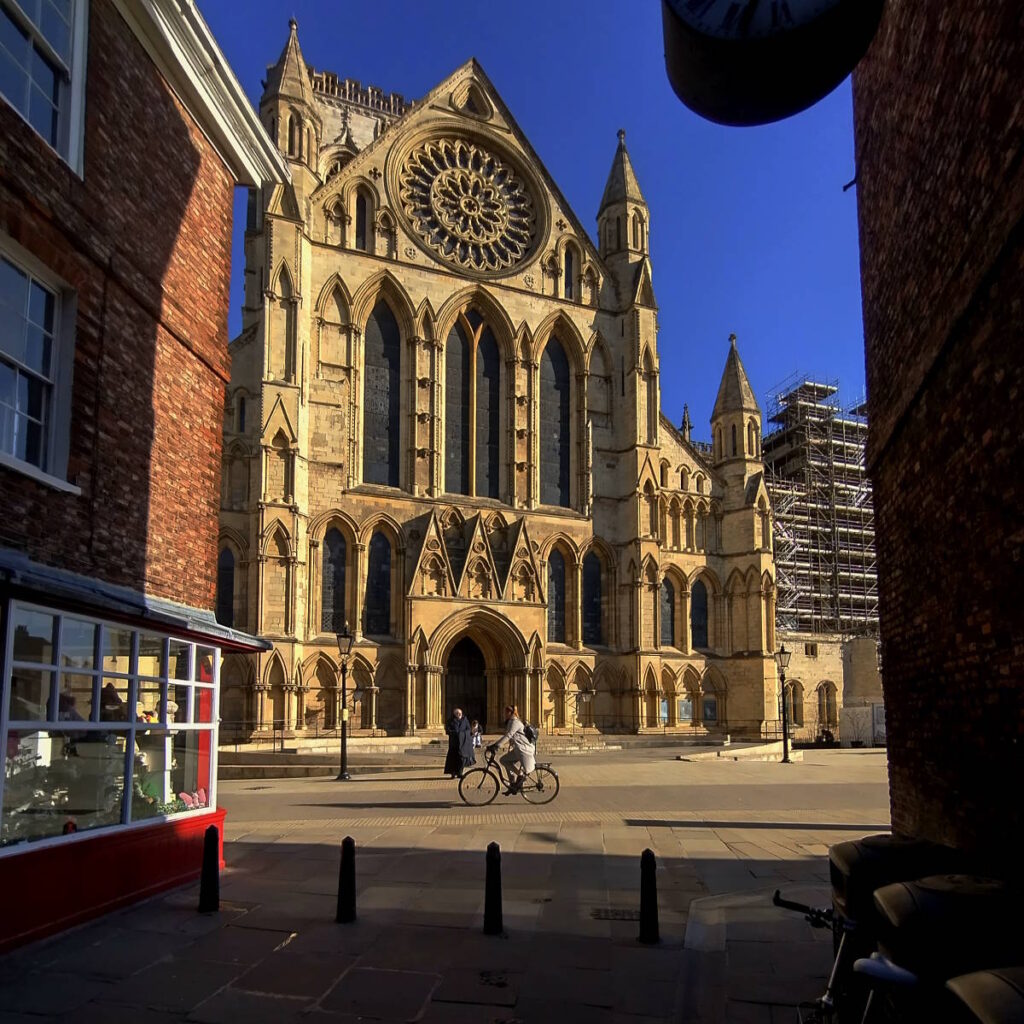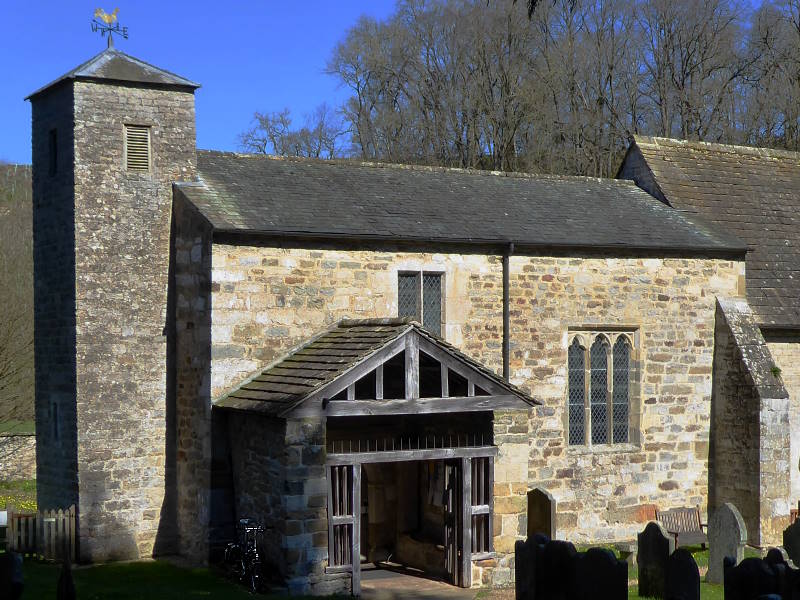Of England’s 32 Minsters, 13 are in Yorkshire. York’s is the best known, biggest, and obviously, best. Ripon and Beverley are familiar too; Hemingborough and Howden less so. Those have been joined in the last thirty years by newly-minsterised churches in Dewsbury, Doncaster, Rotherham, Halifax, Leeds and Hull. I can hear pub quizzers busy scribbling away already.

But two of Yorkshire’s Minsters are surprisingly, charmingly, delightfully tiny and obscure, made ‘Minsters’ centuries ago when they were thriving religious centres. Both are on the southern fringe of the North York Moors: Stonegrave Minster, a few miles southeast of Helmsley; and Kirkdale (aka St Gregory’s) Minster, in a secluded valley outside Kirkbymoorside.

So, thanks to sunny weather, a folding bike and the continuing £2 flat bus fare scheme, I couldn’t resist a trip from England’s Biggest Minster to its Smallest Minster today.
I’m familiar with York Minster, of course. I cycle past it most days. But I couldn’t resist riding round yet again while awaiting my 31X bus. There were few tourists this early; I had the place almost to myself, without fear of photobombing a group of Chinese students making a TikTok video.

Begun in 1230, the majestic cathedral took almost 250 years to build, which is almost as long as Scottish Power are taking to reply to my emails.

Suitably humbled by the presence of something unimaginably mightier than me, possibly beneficent, possibly wrathful – Scottish Power, I mean – I compressed my folding bike and got the bus to Helmsley for two quid.

It was a fine ride, with cloudless skies and the rich greens of Moors footslopes extended before us. I glimpsed the White Horse at Kilburn, and we close-passed the imposing ruined facade of Byland Abbey, which served as a model for York Minster.

I got off at Oswaldkirk and enjoyed some big, open views of the gently sloping sub-Moors farmland on my way to Stonegrave, my warm-up microminster before heading on to Kirkdale. (It was closed.)


It was lovely riding on this cool morning, the sky clear bottomless blue like a Hockney acrylic, the lanes quiet except for birds chirping like there was no tomorrow. Sadly, given current government attitudes to the environment, they may be right.

Kirkdale is hidden away on a narrow lane by a stream (which trickles all the way down from Cockayne, whose far-flung village I rode to last year). It’s a small place, and the church feels like it stands alone in the trees, tranquil in its isolation. A sign directs you to ST GREGORY’S MINSTER – helpfully for satnav users, who may find the postcode actually takes them off course to a holiday let a mile away. I had no such problems, relying on OS maps.

The church was built in about 1060, and has had a few additions over the centuries. No doubt each new generation of builders came in and rubbished the previous lot’s work. (‘Who did that? The Anglo-Saxons? Pfff. Used the wrong mortar, they did. It’ll all have to come out.’)
Most notably, the square tower on the end by the entrance is not medieval as it might seem, but, er, Victorian. (See also York’s City Walls.)

Kirkdale’s claim to fame is its Anglo-Saxon sundial, in the entrance porch, which has survived thanks to being plastered over for centuries.

It doesn’t tell the time very well now. Partly that’s because its gnomon is long gone, perhaps nicked by same dodgy scrap-metal merchants that stole my old garden gates. Mainly though it’s because it’s under the porch, and never sees the sun.

The church inside is a pleasant, typical ‘cosy country church’, with village-scale pews, font and altar, and an organ that at a pinch you could take on gigs in the drummer’s van. The ambience is about as far from a Minster as you can imagine without being a misprint. (Google always thinks you’re searching for Mister somebody or a Something Minister.)

Round the corner from the church is a little-heralded, and certainly unsigned, prehistoric cave. Kirkdale Cave is marked on the OS large-scale maps; it’s a hole in the rock wall of a natural bowl, and extends back over 400m if you’re brave enough to scale the West Face to get in, which I wasn’t. I was, after all, quite alone, and getting stuck in the cave with no phone signal might not have been a great idea.
The cave is empty now, apart perhaps from discarded cans of Red Bull and vodka bottles, but when it was discovered by workmen in 1821 it contained, wow, hippopotamus and elephant bones.
Aha, many said at the time, Proof of the Biblical Flood! Er, no, said wary scientists, they were probably brought in by hyenas having a takeaway around 7,000 years ago. How do you know?, said the many. Um, because of all the fossilised hyena poo, said the scientists.
Which put me in mind of lunch, so I trundled on to Kirkbymoorside, for a pork pie and cream doughnut from Thomas the Baker. Before my £2 bus back to York I had time to look for the town’s ‘ruined castle’. Hmm – it’s no more than a bit of wall. I’ve seen bigger barbecues.
Still, it had been a splendid day. England’s biggest Minster to its smallest, and another reminder of just how much interesting stuff there is to explore on a bike in Yorkshire.
And all for under a tenner. Even if I’d had another cream doughnut.
